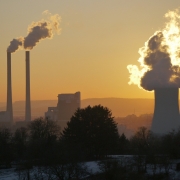New York City’s Struggle Against Waste
In April this year, the New York City Department of Sanitation (DSNY) released its “2017 NYC Residential, School, and NYCHA Waste Characterization Study” – according to the information, the latest look at what New Yorkers put in their trash, recycling, and organic bins.
The major finding of the study, conducted over spring, summer and fall in 2017: New Yorkers “are producing less waste at home than ever before”. More than two-thirds (68 percent) of the citizens’ waste belongs in a curbside organic or recycling bin. Organics – including food scraps, food-soiled paper, and yard waste – are the largest and still growing category of waste. The city’s inhabitants are best at recycling cardboard and most often forget to recycle aluminum. However, cartons and aseptic boxes, including milk and juice cartons, are the most commonly misplaced recyclable items. Another result of the study: After New York State had “implemented an electronic waste disposal ban”, the amount of e-waste has declined by 60 percent.
“The study is first and foremost a reflection of what we buy and choose to get rid of,” New York’s Sanitation Commissioner Kathryn Garcia was quoted. “More specifically, this study tells us that our efforts to reduce, reuse and recycle our waste are working. The average New York City household throws away less and recycles more today than five years ago.” The Department conducted similar studies in 2005 and 2013.
As reported, the current study delivered data on each segment of the waste, as “some 800 samples were hand sorted by the study team into 70 main sort-categories and an additional 172 sub-categories to get a detailed understanding of the variety of plastic and paper products in the waste stream”. Furthermore, the analysis provided context behind the observed changes. “For example, in 2005 the average New Yorker recycled more than 100 pounds of newspaper. In 2017, this total was less than 20 pounds – reflecting the changing way we receive news,” the Department stated. “Also, as product manufacturers have modified their packaging, the study shows marked changes in certain types of recyclables including more rigid plastic containers and less glass containers.”
Goal: Zero waste to landfill by 2030
The more than eight million residents of New York City generate over six million tons of waste every year. As reported, every week the average New Yorker throws away 15 pounds (6.8 kilograms) of waste and another nine pounds (four kilograms) in commercial establishments. There are no local landfills – the Fresh Kills landfill on Staten Island was closed in 2001. At that, New York “came to rely on a system of private transfer stations throughout the city. With an average truck able to carry about ten tons of waste, that 13,000 tons of daily trash that had once been sent to Fresh Kills became close to half a million truck trips to these private transfer stations,” the homepage “Getting to Zero” gave account. “From there, loads were combined in tractor-trailers that could carry twenty tons each and then trucked hundreds of miles to landfills as far away as Kentucky and South Carolina”. This meant increased pollution in areas where transfer stations clustered.
The goal to eliminate waste sent to landfills by the year 2030 was articulated in the Mayor de Blasio’s “OneNYC: The Plan for a Strong and Just City”. According to the New York City Department of Sanitation, it has made great progress in achieving this aim. As reported, the organics collection program has grown to be the largest in the nation. As of June 2017, more than 1.6 million residents citywide were enrolled in organics collection service, up from about 717,000 at the end of 2016. “We are on track to serve all New Yorkers by the end of 2018 with either curbside service or convenient neighborhood drop-off sites,” Kathryn Garcia wrote in the 2017 progress report regarding the strategic plan of 2016.
The city’s solid waste management plan is the blueprint for a “long-term, sustainable, and equitable” approach to managing the residential waste, the reader can learn in the 2017 progress report. The plan includes the conversion of four marine transfer stations, the opening of four land-based rail transfer stations, the final closure of Fresh Kills landfill, and a commitment to limiting the impact of waste management infrastructure on neighborhoods.
C40 Cities Climate Leadership Group, Inc., a network of the world’s megacities committed to addressing climate change, underlined the “combination of waste reduction, reuse and recycling programs, and wastewater treatment plants with anaerobic digestion that harness food scraps to create energy”. New York City would “render landfills a thing of the past”. In doing so, 2.56 million metric tons of CO2 would be reduced by 2050, the non-profit organization, created and led by cities, is convinced. Apart from that, there are further benefits with regard to environmental, social, economic and health aspects. According to C40, eliminating the transportation of waste to landfills will save the city more than 310 million US-Dollar a year and decrease air pollution, to name but two.
www1.nyc.gov/assets/dsny/
www.c40.org/
Photo: pixabay
GR 3/2018








